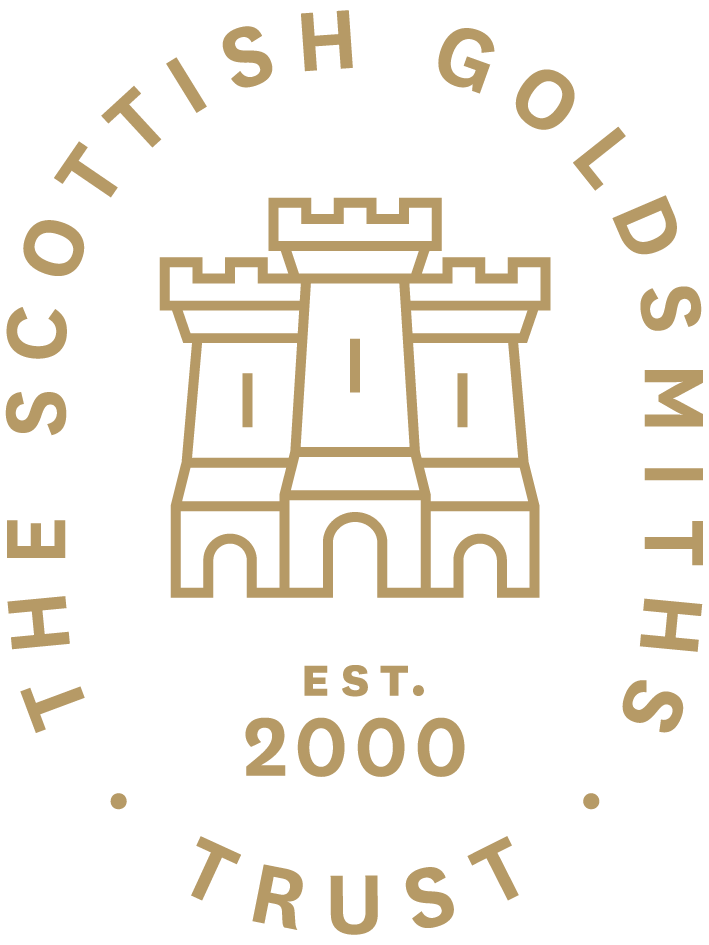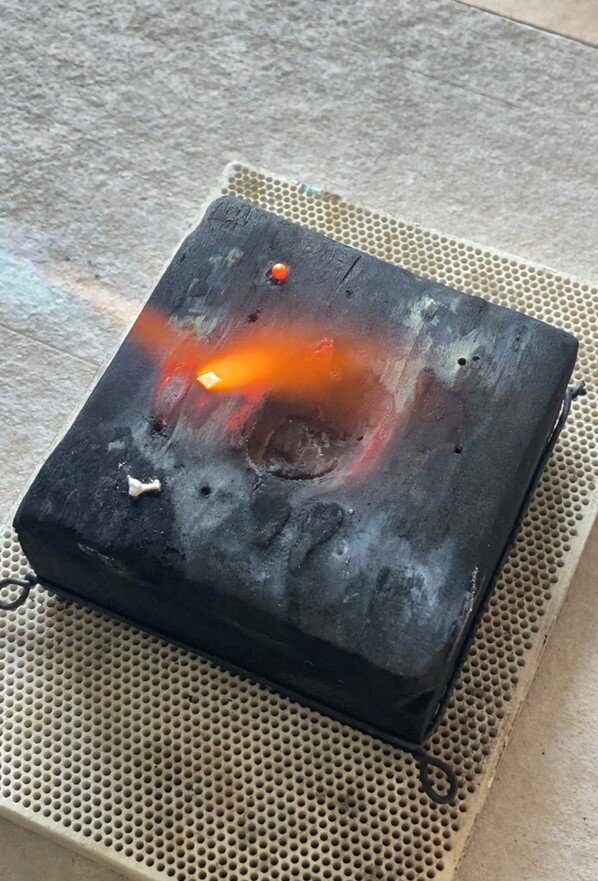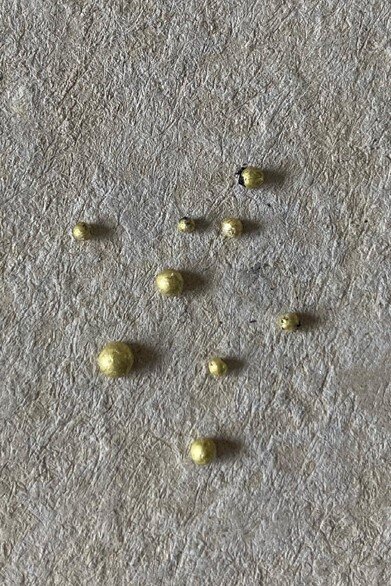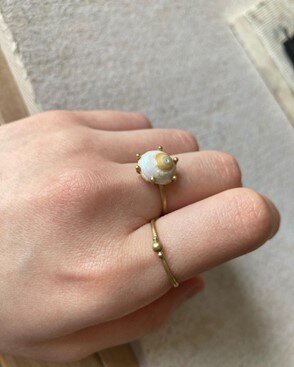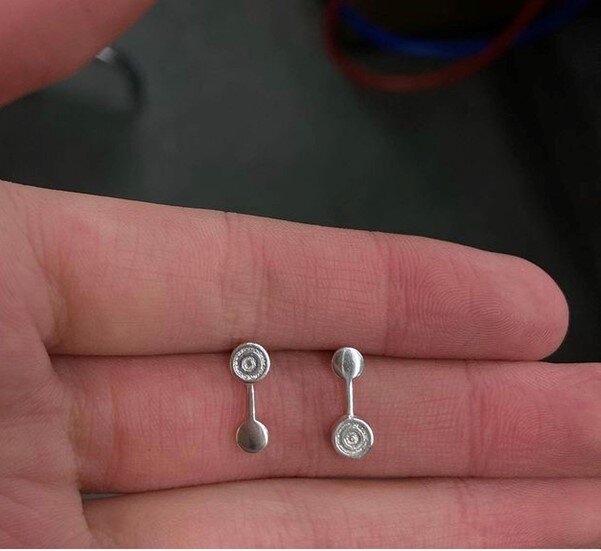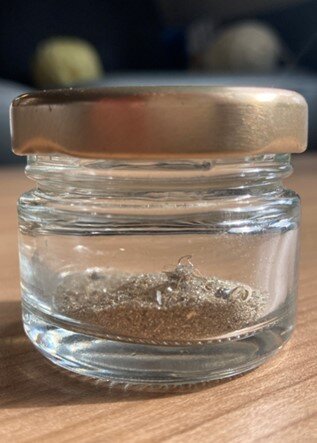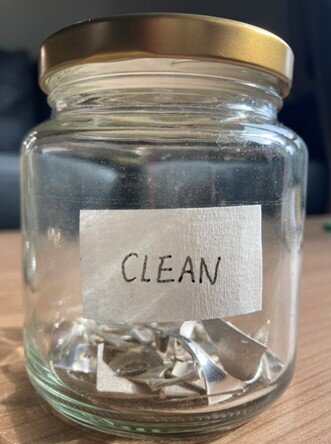Ethical Making @ Edinburgh College of Art
Ethical Making @ Edinburgh College of Art
Despite studying and working during a global pandemic, students and educators at Scotland’s art colleges persevered to transform their living spaces into inventive workspaces and classrooms. We are thrilled to see both the exciting and innovative work they have produced over the past year and a half and the continued passion of students and educators to incorporate ethical making into their studies.
We spoke with our Ethical Making Student Ambassadors from Scotland’s art colleges to learn more about how they and their colleges have adapted and incorporated sustainable practices into their workshops, jewellery making and silversmithing.
Dingyuan Liu, Ethical Making Ambassador and second-year student at Edinburgh College of Art, talks about the changes she has made in her own practice, and the changes that have been made at ECA for all students to take part in.
What changes has your college made this year to be more sustainable/responsible?
This year, the 2nd year students were taught how to use natural products to create eco patination, such as rice, vinegar, and salt.
During the 3rd year students’ Christmas sale project, they needed to use the casting technique for producing their final piece. Their tutor encouraged them to use eco-friendly silver for casting pieces. She listed some of the benefits of using eco silver, such as reducing the carbon footprint, energy-saving, reusability and more. She also mentioned that eco silver could be treated and worked in the same way as silver for the same quality results, and it is just simply more environmentally friendly. In the end, all the 3rd year students used eco silver to produce their Christmas sale final pieces.
Eco-patination using copper, brass and steel with Tabasco, rice, soy sauce, vinegar, pickle juice and mustard.
Images from Louisa Thomson, Year 2 Jewellery and Silversmithing student
What changes have you made in your own practice?
I have set up a small workshop in my flat. I used old clothes instead of using tissue/blue roll for cleaning or drying metals. Also, instead of using chemical products in my jewellery practice, I used some natural ones, such as boiling vinegar and table salt for pickles and boiled egg for oxidation. It saves money and is safer than using chemical products.
When I was making some brass pieces in my workshop, I found a way to melt a small amount of brass by applying borax to the brass surface. I did a bit of research online because I was curious about why borax can melt brass. The borax will reduce oxidation in the brass, causing it to melt. I like to keep small scraps of brass in a glass bottle to use because they are gold in colour and shiny. I found this method really useful and have made some small findings and rings this way.
Borax used to melt a small amount of brass scraps
What would you like to see happen next year in your college regarding Ethical Making, or across the education of jewellery generally?
I think showing a short film about the background of ethical making, such as how and why the idea of Ethical Making was brought into the jewellery industry, or understanding how the mining industry could damage the environment and contribute to climate change. I believe learning about Ethical Making at the start of the academic year will make students aware and instil the importance of ethical jewellery in their minds.
Brass rings made by Ding using scrap
Ding Liu
Eco-silver earrings by Ding cast for the Christmas Sale project
How have you found being an Ethical Making ambassador?
I have learned a lot by participating in the Ethical Making Pledge as an Ambassador. Knowing more stories about ethical making made me aware of the importance of ethical jewellery, such as the emotional value and harmful impact behind the jewellery. Finding a way of making others aware of ethical making and instilling ethical ideas in their mind is really interesting, as well as hearing what other colleges and students have done in their ethical making process.
What is the most impactful thing you have learned this year that you will take into your future studies/career?
I participated in the Ethical Manufacturing Commitment Project at Edinburgh College of Art. It has made me aware of ethical issues in the jewellery industry and encouraged me to be more sustainable in my jewellery practice so I can provide a little support for the planet. For example, I learned how to use natural products and learned some tips on how to clean and dry your pieces. Using more natural products has made me less concerned about harmful chemicals in my jewellery practice.
Teaching fellow Heather Woof added,
The Ethical Manufacturing Commitment Project is a project led by the ECA department staff, that makes connections with external manufacturers of casting and CAD printing. The tutors talk students through a range of material options relevant for their designs, highlighting ethical options. The choices that a student makes will be based around their specific design and choices. Metal castings were undertaken with VIPA Designs in recycled silver as part of this project.
I have also realised the emotional value behind the jewellery by taking part in this project. Jewellery is often purchased to symbolise special moments and relationships, such as weddings and birthdays. Each piece of jewellery tells its own story, and importantly, it helps people remember meaningful moments in their lives. The symbolic value of a piece of jewellery is tarnished when the story behind it includes the unfair treatment of a community and the harmful impact on the environment. So, it is important to know exactly where all your supplies come from.
It was also interesting to see how relationships were built between organisations. In my understanding, everyone engaged in the project is a stakeholder. Everyone was working on different things for the same goal. I gained some knowledge from this project on how I could work in a team or collaborate with other artists in the future.
Silver scraps and dust collected for re-use
Heather Woof, Co Program Director of the Jewellery and Silversmithing Department at ECA had the following to say about the Ethical Making Pledge and the Ambassador programme:
“The Ambassadors play a key role in connecting students to ethical making resources and practises. We are beginning to see these themes emerge organically throughout student work both within Jewellery & Silversmithing core courses and throughout the elective courses that our students take part in. From dissertation topics investigating the use of Lab Grown Diamonds, jewellery projects centred around sustainability and Ethical Making as the central focus for elective assignments. Year on year, we see a growing engagement with these themes amongst our students.”
Our thanks to Ding and Heather for sharing their experiences with us and the wonderful progress being made at Edinburgh College of Art.
This blog is first in a series devoted to sharing ethical making practices in the Scottish Art Colleges.
